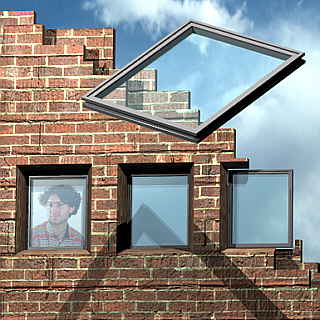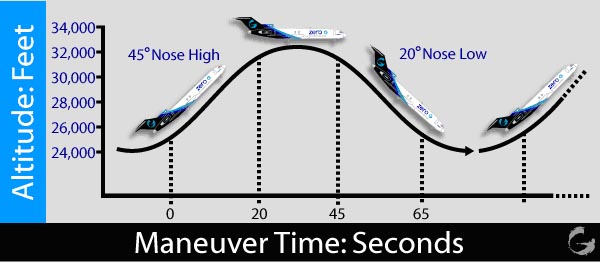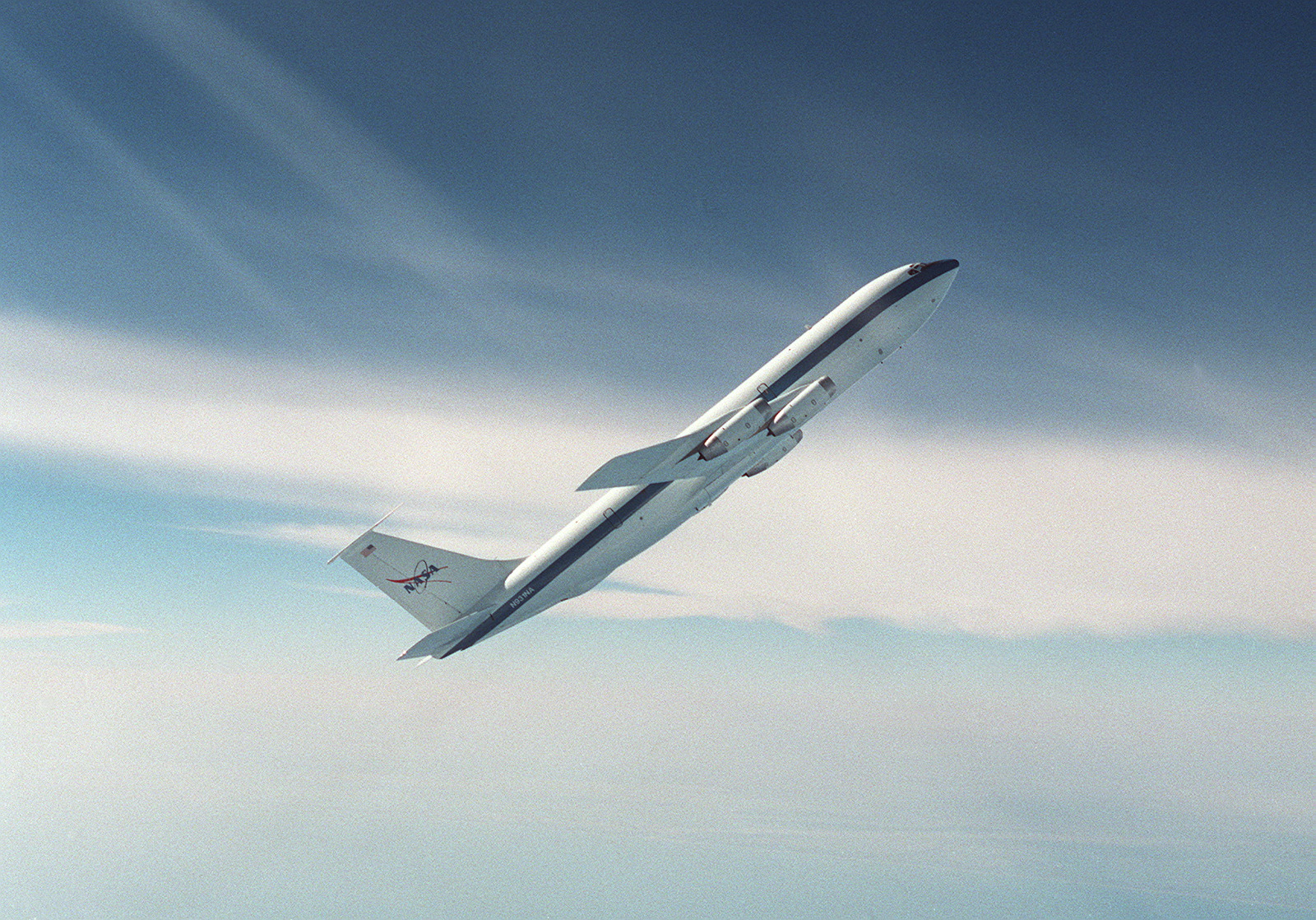Aerogels and Zero-Gravity
This is an article about research that has been done on the effects of gravity on aerogel formation. But why zero-gravity? Read on.
Aerogel as a Superinsulator
One of the most important examples of aerogel uses to date is the application of silica aerogels as superinsulation. An inch-thick pane of a low-density silica aerogel is as effective of an insulator as a stack of 30 panes of window glass, and thanks in part to this impressive insulating ability, the electronics on the twin Mars Exploration Rovers have managed to survive the extreme thermal cycling experienced on Mars (from -140°C to 20°C) well beyond design lifetime.
Aspen Aerogels has even recently commercialized a family of superinsulating blankets based on silica aerogel for terrestrial use. One major advantage to silica aerogel as a terrestrial thermal insulation is the enhanced energy efficiency it can bring to industrial plants. Energy-intensive refineries, for example, predominantly use mineral wool as an insulating medium. Silica aerogel materials are now poised to displace mineral wool as a superior insulation in the next decade, resulting in greater efficiency that translates into reduced emissions in what amounts to 15% of all industrial CO2 emissions in the United States. Furthermore, unlike polyurethane and polystyrene insulations, no chlorofluorocarbon (CFC) blowing agents are required to manufacture aerogel insulation.
Of the materials used in building a house, window glass is the lossiest in terms of thermal insulation. Double-pane windows, sealed sandwiches of glass with rarefied gas like Ar or Kr trapped inside, are a way to address this problem, however lose their insulating ability over the course of about 10 years. It has been proposed that silica aerogel, which is usually transparent, could be a revolutionary window insulation material. Unfortunately, due to nanostructural variations in the aerogel’s substructure, silica aerogels Rayleigh scatter the short wavelengths of visible light, which makes them appear blue. For practical commercial applications in windows, this effect would need to be significantly reduced, and in order to do so, a better understanding of the origins of these nanostructural variations and how to control them must be established.
Effects of Gravity on Aerogel Formation
In most chemical systems, the effects of gravity on the system’s chemistry are negligible, since the magnitude of the quantum interactions that govern the physics of chemical reactions greatly overwhelms the magnitude of interactions arising from the weights and mutual gravitation of species in the system. But there are some chemical systems in which secondary phenomena arising from the presence of an acceleration field (such as buoyancy and convection) significantly influence the physics and consequently the chemistry of the system. Sol-gel systems are an example of such systems influenced by secondary effects of gravity [1]. Buoyancy-driven fluid flow, for example, has been shown to affect the formation of micro- and nanostructures in a gel in that prior to gelation, buoyancy-induced eddies and sedimentation can significantly perturb sol-gel substructures, and such deleterious perturbations may become “frozen” as imperfections in the gel’s structure [2,3]. Furthermore, in conducting a space-flight experiment on the growth of Stöber particles (unagglomerated nanosized particles suspended in a liquid), Smith et al. [3] found that chemistry intended to produce Stöber particles resulted in low-density gels in space, while samples prepared in 1G remained in suspension. Thus it seems that the effects of an acceleration field somehow influence the evolution of the chemical structure of colloidal silica particles in a way that alters the manor by which they can agglomerate to form a gel (i.e., from condensation of reactive moieties on the particle surfaces).
Aerogels are one class of materials that should retain a record of such gravity-sensitive features or properties. Aerogels are formed by extracting the liquid component of a gel in such a way as to preserve the structure of the gel’s solid framework [4,5]. The most common method of doing this is through supercritical drying, in which a gel is brought to a temperature and pressure past the critical point of its liquid component, where what was the liquid can then be gently removed from the gel’s solid porous framework through isothermal depressurization of the supercritical fluid. This process is done to prevent capillary forces which would collapse the gel’s framework upon removal of the pore fluid from arising (as is the case when the liquid is simply evaporated from the gel), since supercritical fluids have no surface tension and thus can impart no capillary stress. Upon depressurization of the supercritical pore fluid, a low-density solid material-aerogel-is obtained, retaining nearly all of the volume of the original gel with only minimal collapse of the initial porous framework.

Visible differences can be seen in silica aerogels derived from gels formed in 1 G and in microgravity (image courtesy University of Wisconsin Zero-G Aerogel Team).
As the physical properties of aerogels depend on the manner in which the aerogel is structured at the nanometer scale, the ability to control and modify aerogels at the nanometer scale is of great interest. If the presence of an acceleration field does in fact affect the formation of colloidal particles as demonstrated by Smith, being able to attribute specific materials properties and/or morphological features in aerogels to those effects would therefore also be of great interest. Understanding the nature of these effects could aid in the development of new materials-processing techniques for optimizing the properties of aerogels (for example, in preparing non-blue transparent window insulation) as well as add to the basic understanding of how substructures in sol-gel systems form. Additionally, Sibille et al. have proposed a number of applications that could benefit from the production of aerogels in space, including in-situ production of optically transparent radiation shielding and lightweight molds for casting metals on the Moon and Mars [6]. Understanding the implications of gravity on aerogel formation will be essential to reliably produce aerogel materials in these environments.
Experiments Investigating the Effects of Gravity on Aerogel Formation
Lawrence Berkeley National Laboratory and Marshall Spaceflight Center
In the 1990’s, Hunt et al. at Lawrence Berkeley National Laboratory conducted a series of light scattering experiments aboard NASA’s KC-135A towards understanding particle growth in solutions used to prepare gels for silica aerogel production. This was followed by an experiment flown on STS-95 (notably executed by John Glenn) to actually prepare gels suitable for silica aerogel production, however due to an experimental error the results of this experiment were inconclusive.
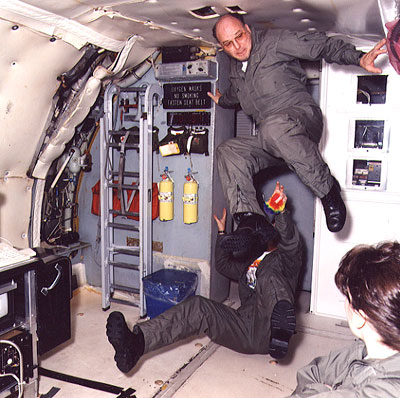
Dr. Arlon Hunt on NASA's KC-135A researching the effects of gravity on silica gel formation (image courtesy of Dr. Mike Ayers).

Sen. John Glenn getting ready to go to space in 1998 (image credit NASA, National Geographic Channel).
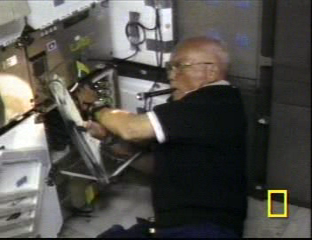
Sen. John Glenn on the Space Shuttle mission on which the aerogel experiment flew (image credit NASA, National Geographic Channel)
University of Wisconsin
Prior to 2001, usable silica gels could only be formed on long-duration spaceflights, as the time required for the gels to form (the “gel time”) greatly exceeded the 18-23 seconds of microgravity readily attainable by parabolic flight. In 2001, Steiner et al. at the University of Wisconsin conducted a series of experiments demonstrating a rapid gelation method for preparing gels suitable for silica aerogel production within the microgravity time afforded by a single parabola on the KC-135A. In 2003, the group reported aerogels derived from gels prepared in microgravity exhibited higher surface areas and lower skeletal densities when compared to aerogels derived from gels prepared in 1 G [7], however the limited number of samples available for analysis and a number of variations between conditions in-flight and conditions used to prepare control gels post-flight raised questions regarding whether or not the observed findings were representative or circumstantial. As such, questions about the effects of gravity on aerogel formation remain inconclusive.
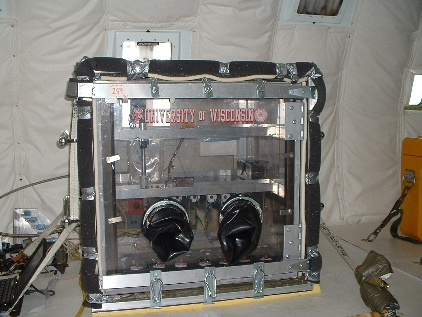
Experiment box used by the University of Wisconsin to make silica gels in microgravity on the KC-135A (image courtesy University of Wisconsin Zero-G Aerogel Team).
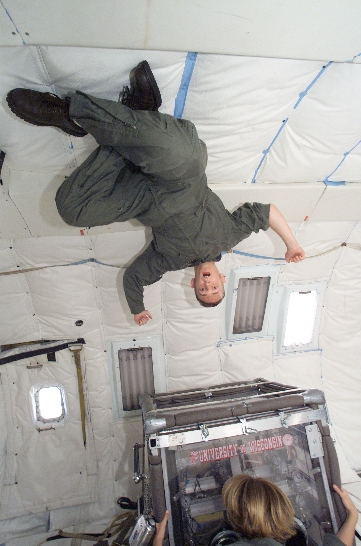
Stephen Steiner (top) and Emily Prewett (bottom) running supercritical chemistry on NASA's KC-135A, well Prewett is anyway (image courtesy University of Wisconsin Zero-G Aerogel Team)
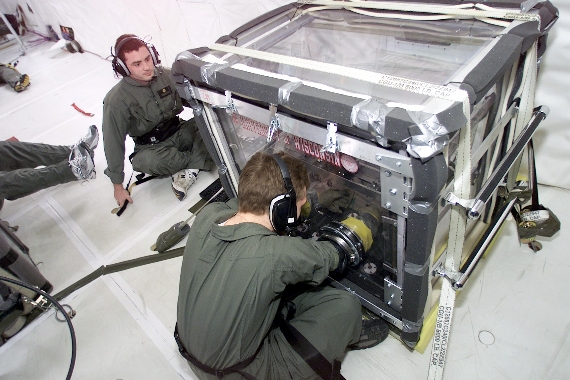
Mark Schneider (left) and Stephen Steiner (right) making silica alcogels on NASA's KC-135A (image courtesy of University of Wisconsin Zero-G Aerogel Team).
Current Research
Steiner eventually sent his equipment from Wisconsin to MIT where the MIT Zero-G Team took the project over. The team is currently planning a set of experiments to finally answer the question of how gravity affects the nanostructure of aerogels. Here’s a little preview of what they’ve got in store:
We have planned a comprehensive experiment using an improved rapid gelation process that will allow us to conclusively characterize the effects of microgravity on silica aerogel production. The experiment will aim to prepare up to 180 silica gels aboard ZERO-G Corporation’s G-FORCE ONE B727 aircraft in microgravity, during straight-and-level flight (1 G), and, if available and feasible, during Lunar (1/6 G), Martian (1/3 g), and induced gravity (1.8 G) parabolas. The gels will be prepared through a specially-optimized sol-gel process in which an alcohol-based fluoride-hydroxide catalyst is added to a alcohol-based silicon alkoxide solution. Upon mixing of these two liquids, a gel forms within 18 seconds, permanently retaining a record of the effects of microgravity on the system in its nanostructured particle framework. The gels will then be taken back to MIT where they will be supercritically dried to produce aerogels for analysis. These materials will allow us to:
- Understand the roles of convection and buoyancy in the manufacture of nanostructured materials towards developing methods of controlling substructural variations that give rise to optical scattering in silica aerogels
- Gain insights into the physics of particles transitioning from Brownian motion to Newtonian motion as a result of growth and agglomeration
- Characterize the differences in materials properties of sol-gel-derived materials formed in space and on the Moon and Mars vs. on Earth
- Demonstrate proof-of-concept microgravity materials processing towards in situ resource utilization for aerogel production (e.g., thermal insulation, metal casting molds, particle debris shielding, supercapacitors)
Differences in materials properties between aerogels derived from gels prepared in microgravity, 1 G, and other available acceleration magnitudes (i.e., lunar gravity, induced gravity) will be assessed. Mean property values and spread as a function of acceleration field magnitude will be ascertained. Reaction temperature, pH, and sol particle size as a function of time and acceleration will be plotted to determine the origins of any potentially observed differences in materials properties that correlate to different magnitudes of acceleration field, i.e., enhanced mixing or change in pH.
We hypothesize an inversely proportional relationship between internal surface area and acceleration field magnitude and a proportional relationship between skeletal density and acceleration field magnitude. As reported by both Smith and Steiner, we further expect to observe a faster gel time in reduced gravity due to enhanced mixing. We aim to understand if differences in materials properties that might arise from acceleration field would be due simply to enhanced mixing or to more arcane mesoscale phenomena.
Sounds cool! But we’re a little biased. Read more about their project at their project website.
How Zero-Gravity Works
So how do you achieve zero-gravity?
There are three ways to do it:
- Go into deep space, far away from any gravitational body
- Go into orbit (on the Space Shuttle or the International Space Station)
- Take a parabolic flight
The first works if you are a deep space probe. The second works if you’re an astronaut. The third is (usually) the easiest way because you don’t have to leave the atmosphere!
Parabolic Flight
Parabolic flight is an aerobatic maneuver performed by an airplane that enables brief (15-25 sec) periods of near-zero-gravity. Both going into orbit and parabolic flight work by using centripetal acceleration to create a vector that equally opposes gravity.
In parabolic flight, a plane, like NASA’s Vomit Comet (which included a couple KC-135A’s and C-9B’s) or Zero-Gravity Corporation’s B727 (which now flies NASA’s parabolic flights) flies in a parabolic arc. The plane flies up at a 45-50 degree angle to about 32,000 where the engines are pulled back to idle. The plane has built up enough moment by that point that when the engines are pulled back, it essentially just drifts up and over in an arc like a baseball being thrown up into the air. During this period, everything in the plane feels weightless. The plane then tips forward and starts diving down, the engines are pulled forward again, and the plane then pulls back up around 24,000 ft. During this period, everything in the plane feels about 1.8 times heavier than Earth’s gravity.
Depending on how steep the arc is flown, you can negate the effects of gravity varying amounts and achieve Martian gravity (1/3 G), Lunar gravity (1/6 g), and even negative gravity (everything moves up to the ceiling).
On a typical NASA flight, you might experience zero-gravity 40 times in a flight, each period about 20 seconds long. On a tourist flight, you would probably experience Martian gravity once, Lunar gravity twice, and zero-gravity 13 times.
In fact, you (yes you!) can experience zero-gravity on the same plane NASA uses to train astronauts! Like aerogel, zero-g isn’t just for NASA any more! Check out the Zero-Gravity Corporation’s website.
References
[1] D.A. Noever, Microgravity Sci. Technol. 3 (1994) 14.
[2] J.X. Zhu, M. Li, R. Rogers, W. Meyer, R.H. Ottewill, STS-73 Space Shuttle Crew; W.B. Russel, P.M. Chaikin, Nature 387 (1997) 883.
[3] D.D. Smith, L. Sibille, R.J. Cronise, A.J. Hunt, S.J. Oldenburg, D. Wolfe, N.J. Halas, Langmuir 16 (2000) 10055.
[4] C.J. Brinker, G.W. Scherer, Sol-Gel Science: The Physics and Chemistry of Sol-Gel Processing, Academic Press, New York, 1990.
[5] N. Hüsing, U. Schubert, Angew. Chem. Int. Ed. 37 (1998) 22.
[6] L. Sibille, S. Sen, P. Curreri, D. Stefanescu, Space Resources Roundtable II (2000).
[7] S. A. Steiner III. International Symposium on Aerogels 7, Arlington, VA (2003).

